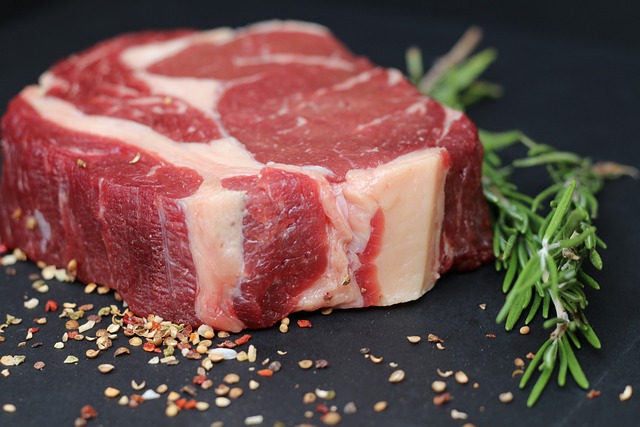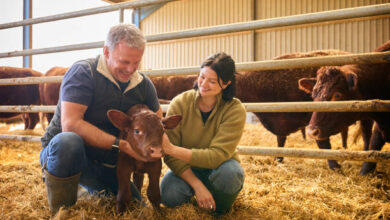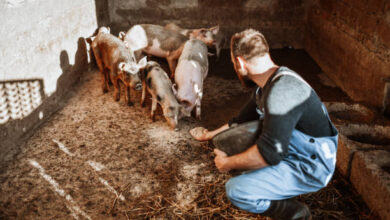
What Animal Does Steak Come From?
Whether it’s sizzling on the grill or seared to perfection in a pan, steak is a beloved dish worldwide. But do you know which animal your steak comes from? Understanding the origins of steak can enhance your appreciation of this culinary delight and help you make informed choices at the butcher or restaurant. Let’s dive into the world of steak and uncover the animal behind this popular cut of meat.
The Primary Source of Steak: Cattle
Cattle Breeds for Steak
Steak primarily comes from cattle, a key player in the beef industry. Cattle are raised specifically for their meat, which is prized for its flavor and tenderness. Various breeds of cattle are used in steak production, each offering different qualities:
– Angus: Known for its marbled texture and rich flavor, Angus beef is a popular choice for high-quality steaks.
– Hereford: This breed is renowned for its tenderness and balanced flavor, making it a favorite among steak enthusiasts.
– Wagyu: Originating from Japan, Wagyu beef is famous for its exceptional marbling and buttery texture, often commanding premium prices.
Beef Industry Overview
The beef industry plays a significant role in global food production. Cattle are raised on farms and ranches, where they are carefully fed and cared for to ensure the quality of the meat. The industry supports millions of jobs worldwide and is integral to many culinary traditions.
Types of Steak Cuts
Ribeye
The ribeye is one of the most popular steak cuts, known for its rich flavor and tenderness. It comes from the rib section of the cow, where it benefits from a high degree of marbling.
Sirloin
Sirloin steaks are cut from the rear of the cow, near the hip. This cut offers a good balance of flavor and tenderness and is often less expensive than other premium cuts.
Tenderloin (Filet Mignon)
The tenderloin is the most tender cut of beef, located along the spine of the cow. Filet mignon, a portion of the tenderloin, is prized for its buttery texture and mild flavor.
T-Bone and Porterhouse
Both the T-bone and porterhouse steaks are cut from the short loin of the cow. They include a portion of the tenderloin and a larger portion of the strip steak, offering a combination of tenderness and flavor.
YOU MAY LOVE TO READ
Understanding the Difference Between a Farm and a Ranch
How to Wash Farm Fresh Eggs: A Step-by-Step Guide
How Long Do Farm Fresh Eggs Last in the Fridge?
The Journey from Farm to Table
Cattle Farming
Cattle farming involves raising and caring for cattle to ensure high-quality beef production. Farmers provide proper nutrition, healthcare, and living conditions to optimize meat quality.
Slaughter and Processing
Once the cattle reach the appropriate weight and age, they are slaughtered and processed. The meat is then aged, cut, and packaged for distribution. The processing phase ensures the beef meets safety and quality standards.
Distribution and Retail
After processing, beef is transported to retailers and restaurants. This distribution process involves maintaining proper storage conditions to preserve the quality of the meat until it reaches the consumer.
Quality and Grading of Beef
Beef Grading Systems
Beef is graded based on factors like marbling, tenderness, and age. In the U.S., the USDA grades beef as Prime, Choice, Select, or Standard. Prime beef has the highest degree of marbling and is the most tender and flavorful.
Factors Influencing Quality
Several factors influence beef quality, including:
– Marbling: The intramuscular fat that contributes to flavor and tenderness.
– Age: Younger cattle typically produce more tender meat.
– Diet: Cattle fed a diet rich in grains often produce more marbled beef.
Sustainable and Ethical Considerations
Sustainable Beef Production
Sustainable beef production practices aim to minimize environmental impact and promote responsible resource use. These practices include efficient feed use, waste management, and reducing greenhouse gas emissions.
Ethical Farming Practices
Ethical farming focuses on animal welfare, ensuring cattle are treated humanely throughout their lives. This includes providing adequate space, proper care, and humane handling practices.
Consumer Tips
To choose sustainably and ethically produced beef, look for certifications such as USDA Organic or Certified Humane. Supporting farms and brands that prioritize sustainability and animal welfare can make a positive impact.
Conclusion
Understanding that steak comes from cattle and learning about the various cuts, production processes, and quality factors can enhance your culinary experience and help you make more informed choices. By knowing more about the origins of steak, you can appreciate the journey from farm to table and support sustainable and ethical practices. Do you have a favorite steak cut? Share your thoughts in the comments below! And don’t forget to check out our other articles for more culinary insights.





if you like this article please visit – https://bclubb.es